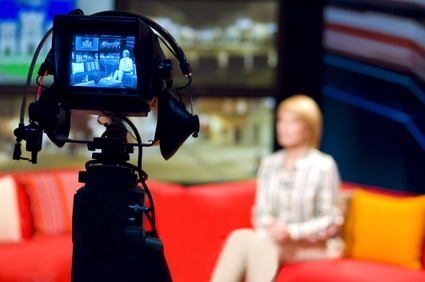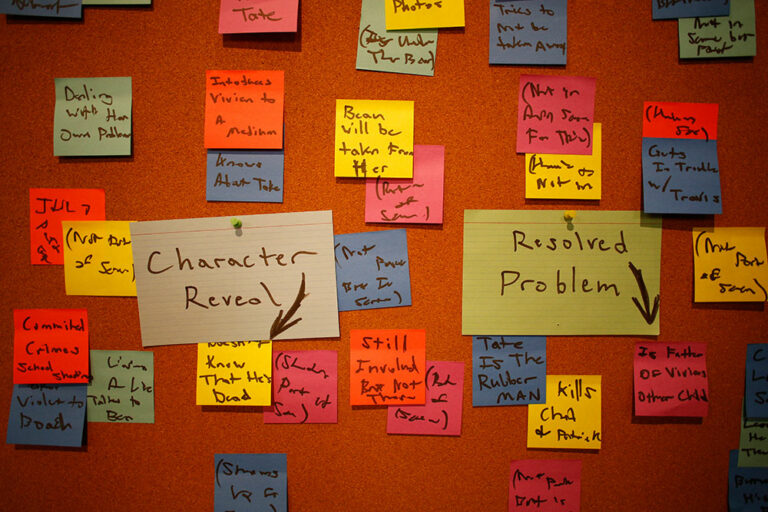Producing an on-camera interview is like having a conversation. It should be easy and enjoyable for both you and the person you’re interviewing. I remember producing my first on-camera interview. When I think about it I get shutters. I wasn’t as prepared as I should have been, and as a result I spent most of my time looking at the questions I’d written down rather than the person I was interviewing. Fortunately, they were a pro – so I was able to get great material.
The path from not knowing what you’re doing to being able to get the perfect interview every time requires doing some homework before you even set up the camera.
Research the person. Before you even think about going to tape, you should know your subject. If the person you’re interviewing has written a book – do yourself a favor and read the book. Read articles they’ve written or been interviewed for. Find other video interviews they’ve appeared in. This is an on-line age; chances are you can find lots of information from a Google search. But don’t limit yourself; check the library, Amazon and trade sources, whatever you need to do to get as much information as possible. The research phase will not only help you to formulate your questions, it tells you whether you have a story or not.
Once you’ve decided you have a story and your ‘subject’ has agreed to the on camera interview set up a telephone pre-interview to go over the questions you’ll be asking. This gives them the opportunity to prepare succinct, witty, clever, or intelligent answers. And it gives you the opportunity to get familiar with the way they speak. If they’re slow, drawn out speakers who hem and haw between each adverb and adjective you’ve got a couple of choices. You can re think your questions so he’s made to give shorter answers, or you can find another interviewee to supplement the first. This allows you to edit between two ‘experts’ in a field, with one being a bit staid and sluggish and the other a picture perfect ‘sound bite.” In any case, the pre interview gives them time to prepare, and that will put them more at ease.
Chances are you won’t be in the shot and no one will ever here your questions. So, remind your interviewee that they will need to either repeat your question, or incorporate your question into the answer. Believe me there is nothing worse than sitting in an editing room trying to string together sound bites that don’t work because you don’t know what the person is responding to.
Example:
Interviewer:
“I read that you won the peach baking contest 10 years in a row. How did that make you feel?”
Interviewee:
“It felt wonderful!”
“It felt wonderful,” can refer to anything, making it difficult to use that sound bite without a voice over setting it up. However, if your interviewee had incorporated the question – the answer might have been: “Winning the peach baking contest for 10 years in a row was a wonderful feeling.”
Take a breath. Seriously, take a breath. When interviewing a subject and you’re not on camera – you’ll have to remind the interviewee to wait a beat before they answer your question. And you too will have to wait a beat before acknowledging the answer. Otherwise your voice will ‘step’ on their speaking making it a nightmare in the edit room to cut a clean sound bite.
Example:
Interviewee:
“If we don’t stop this vicious practice the American people will continue to fall prey to this folly.”
Just as the person says the word ‘folly’ you’re so excited you say, “Wow that was amazing.” The editor will have to struggle, with your “WOW” on top of the interviewees “folly.” Make it easier for everyone, take a breath and wait a beat before you respond.
Don’t be afraid to ask the interviewee to repeat their answer, or ask them the same question in a different way if you believe you can get a better answer. However, there’s a fine line between interviewing and badgering. If you’re new to interviewing on camera people, practice in the mirror. Look at yourself – are you relaxed, comfortable and willing to engage another in a conversation. What you see in the mirror is what an interviewee sees –so practice. If you’re calm, they’re calm. Remember, they’re sitting in the hot seat, with lights shining on them, a camera pointing in their face, a sound man stopping them every so often because there was a noise in the room. Putting them at ease is important and a big part of your job.
Before you begin the interview, have them say and spell their name and position.
Always make sure that you have your interviewee sign a release form. It protects you and allows you to use the footage in whatever manner the release form states. Otherwise, you’re limited and in this age of multiple media outlets, you don’t want to be hampered because you didn’t get a release form signed.
Remember, if you’ve done your research, if you’re prepared, and if you practice, it should go smooth as silk.




Maria, This is a great post.
I would add one important piece of information: mirroring.
Your interview subject is actually taking direction from you on a subconscious basis. If you sit slumped, so will they. If you adjust your posture, so will they. If you smile, so will they. You can give your subject a lot of feedback and encouragement without ever uttering a sound.
I love your blog.
David